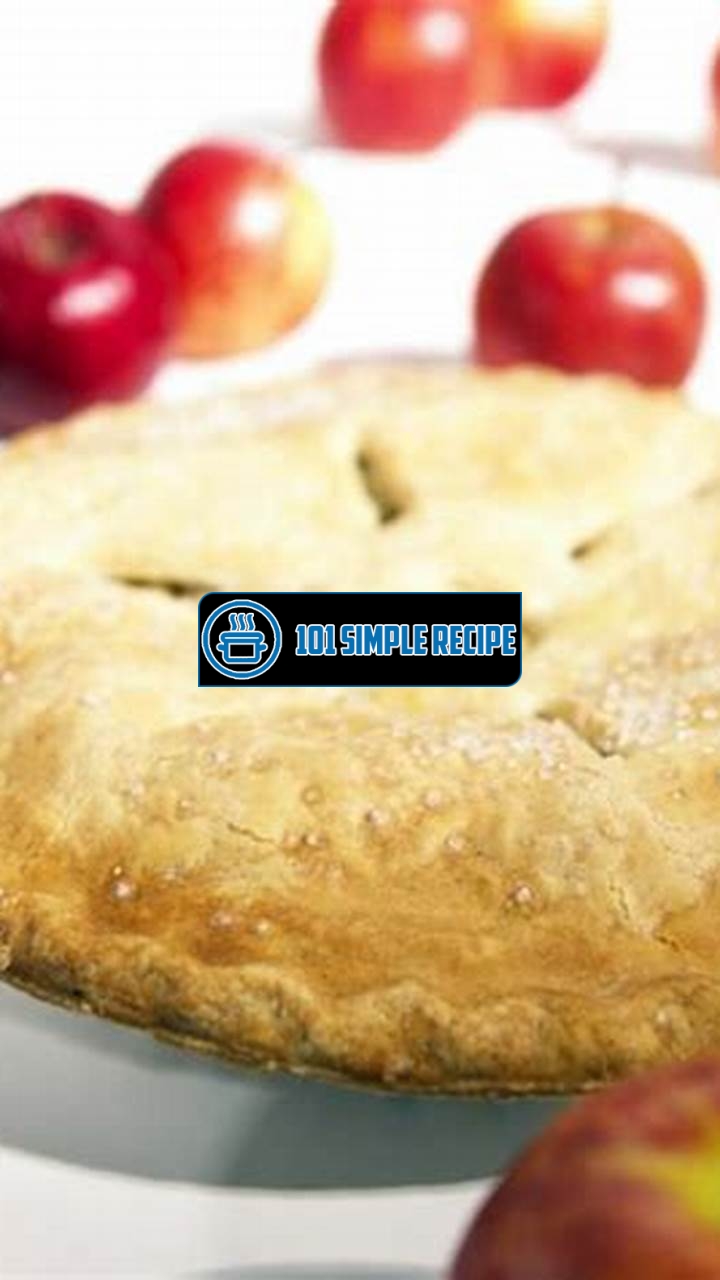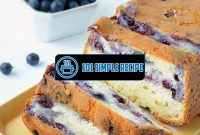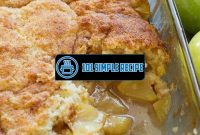Are you ready to bake a delicious apple pie from scratch? One crucial step in achieving the perfect pie is blind baking the crust. Blind baking is the process of pre-cooking the crust before adding the filling, which ensures a crisp and flaky finish. In this article, we will guide you through the steps of blind baking a pie crust for your apple pie, so get your apron on and let’s dive in!

The Importance of Blind Baking
Blind baking a pie crust is an essential step to achieve the perfect apple pie. It involves pre-baking the crust before adding the filling, ensuring that the crust is fully cooked and has a crisp, flaky texture. Without blind baking, the crust may become soggy and undercooked, resulting in a lackluster pie.
Blind baking is particularly crucial when making apple pie because apples release a lot of moisture as they cook. This moisture can seep into the crust and make it soggy if it is not pre-baked. By blind baking the crust, you create a barrier that prevents the moisture from penetrating the crust, resulting in a pie with a deliciously crisp bottom.
The purpose of blind baking
The purpose of blind baking is to partially or fully bake the pie crust before adding the filling. This ensures that the crust is fully cooked and retains its shape when the filling is added. By blind baking the crust, you also create a stable base that holds the filling without getting soggy.
Common pie crusts that benefit from blind baking
While not all pie crusts require blind baking, there are certain types that greatly benefit from this technique. Butter-based crusts, such as traditional pie crusts or pâté brisée, can become soft and greasy when baked with moist fillings. Blind baking helps maintain their flakiness and structure.
Graham cracker or cookie crusts, often used for desserts like cheesecakes, also benefit from blind baking. It helps solidify these crusts, allowing them to hold the filling without crumbling or falling apart.
The benefits of blind baking for apple pie
Blind baking your pie crust before making an apple pie offers several benefits. First and foremost, it prevents a soggy bottom. The moisture from the apples can make the crust soggy, but blind baking creates a barrier, keeping the crust flaky and crisp.
In addition to avoiding a soggy crust, blind baking also ensures that the bottom of the pie is fully cooked. Apple pies have a relatively long baking time, and blind baking helps ensure that the crust isn’t undercooked by the time the apples are cooked through.
Furthermore, blind baking gives the crust a head start in the baking process. This means that the crust will spend less time in the oven with the filling, reducing the risk of overbaking or burning the edges of the crust.
In conclusion, blind baking is a crucial step when making an apple pie or any pie with a moist filling. It helps achieve a crisp and flaky crust, prevents a soggy bottom, and ensures that the crust is fully cooked. By taking the time to blind bake your pie crust, you are setting yourself up for pie perfection. Happy baking!
If you’re looking for more delicious dessert recipes, check out this cookie butter cookie recipe. It’s a unique twist on a classic dessert that you won’t want to miss!
Preparing the Pie Crust
Blind baking a pie crust is an important step in ensuring a perfectly crisp and flaky crust for your apple pie. To achieve this, you need to prepare the pie crust properly. Follow the necessary steps below:
Choosing the Right Pie Crust
The first step in preparing your pie crust for blind baking is selecting the right type of crust. There are various options available, such as a traditional butter crust, a shortening-based crust, or even a store-bought crust. Consider the flavor and texture you desire for your apple pie and choose accordingly. A butter crust will provide a rich flavor, while a shortening-based crust will result in a tender and flaky texture. If you’re short on time, a pre-made crust can be a convenient option.
Rolling Out the Pie Crust
After you’ve chosen your preferred crust, it’s time to roll it out. Begin by lightly flouring your work surface and rolling pin to prevent sticking. Divide the dough into two equal portions for the top and bottom crusts. With a rolling pin, start rolling the dough from the center outward, applying even pressure. Rotate the dough occasionally to maintain an even thickness. Aim for a circle that is about 12 inches in diameter, ensuring it’s large enough to fit your pie dish.
Pro tip: Chilling the dough for about 30 minutes before rolling can make it easier to work with and prevent shrinking during baking.
Crimping the Edges
To create a decorative edge for your pie crust, it’s time to crimp the edges. This not only adds visual appeal but also helps seal the pie. There are several techniques you can use to achieve different crimp styles, such as the classic fluted edge or a simple fork crimp. To create a fluted edge, use your thumb and index finger of one hand to pinch the edge while pressing the opposite finger’s knuckle against the dough. Repeat around the entire circumference of the crust. For a fork crimp, press the tines of a fork gently into the dough along the edge. Choose a crimping style that complements the overall aesthetic of your pie.
Pro tip: Before crimping the edges, brush the rim of the bottom crust with water. This helps seal the top and bottom crusts together.
By following these steps, you can ensure your pie crust is properly prepared for blind baking. Remember to choose the right crust, roll it out evenly, and create a decorative edge. With a well-prepared crust, your apple pie will be a delightful treat with a perfect balance of flavors and textures.
Preventing Shrinkage
When it comes to blind baking a pie crust for apple pie, preventing shrinkage is key. Shrinkage occurs when the pastry dough contracts during the baking process, causing it to pull away from the sides of the pie dish. This can result in an uneven crust and a less than perfect presentation. Fortunately, there are several techniques you can use to prevent this from happening and achieve a beautifully baked pie crust every time.
Chilling the Crust
One of the most effective methods to prevent shrinkage is by chilling the pie crust before blind baking. After rolling out the dough and fitting it into the pie dish, place it in the refrigerator for at least 30 minutes. This will allow the fat in the dough to solidify and firm up. The chilled dough will be less likely to shrink during the baking process, resulting in a more stable crust.
️ Tip: It’s important to work with chilled dough from start to finish. Keep all the ingredients and equipment cold to maintain the integrity of the crust.
Using Pie Weights
Another technique to prevent shrinkage is to use pie weights. These are small, heatproof objects that are placed on top of the crust while blind baking. Pie weights help to weigh down the dough, preventing it from puffing up and shrinking. There are various types of pie weights available, such as ceramic or metal beads, dried beans, or even uncooked rice. Simply line the chilled crust with parchment paper or aluminum foil, then fill it with the pie weights.
️ Tip: Be sure to distribute the weights evenly across the crust to ensure even baking and prevent any areas from shrinking.
The Freezing Method
For an extra level of shrinkage prevention, you can try the freezing method. After chilling the pie crust, place it in the freezer for about 15 minutes before blind baking. Freezing the crust will further solidify the fat in the dough, making it even more resistant to shrinking. Once the crust is thoroughly chilled, remove it from the freezer, line it with parchment paper or aluminum foil, and add the pie weights.
Tip: If you’re short on time, you can skip the refrigerator chilling step and place the rolled-out crust directly in the freezer before blind baking.
By employing these techniques – chilling the crust, using pie weights, and even trying the freezing method – you can ensure that your pie crust stays intact and does not shrink during the blind baking process. Remember, a well-prepared crust is the foundation for a delicious apple pie!
If you’re in the mood for a refreshing drink to go with your pie, try this pink drink recipe. It’s a fruity and colorful beverage that’s perfect for summer!
Blind Baking Techniques
In order to achieve the perfect apple pie with a buttery, flaky crust, it is essential to blind bake the pie crust. Blind baking involves partially or fully baking the crust before adding the filling, which ensures that the crust retains its shape and won’t become soggy when the filling is added. There are several methods you can use to blind bake a pie crust, each with its own unique advantages. Let’s explore these techniques further:
The Traditional Method
The traditional method of blind baking involves preheating the oven to the desired temperature and placing the pie crust in a pie dish. To prevent the crust from rising and bubbling up during baking, you can line the crust with parchment paper or aluminum foil and fill it with weights such as dried beans or pie weights. This helps to weigh down the crust and maintain its shape.
Once the crust is prepared, place it in the preheated oven and allow it to bake for a specified time, usually around 10-15 minutes. This initial baking time ensures that the crust is partially cooked and helps to prevent it from becoming soggy when the pie filling is added later. After the specified time, carefully remove the pie crust from the oven and remove the weights and parchment paper or foil. The crust is then ready to be filled with the apple pie filling and baked further.
The Foil Method
Another popular method for blind baking a pie crust is the foil method. This technique involves preheating the oven, preparing the pie crust, and then tightly covering it with aluminum foil. The foil acts as a barrier, which prevents the crust from browning too quickly while the pie is baking.
Once the pie crust is covered with foil, place it in the oven and allow it to bake for the recommended time. This method ensures that the crust remains pale and prevents it from becoming overly browned or burnt. After the specified time, carefully remove the foil from the crust and proceed with filling and baking the pie as desired.
The Paper Bag Method
A lesser-known but effective method for blind baking a pie crust is the paper bag method. This technique involves preheating the oven, preparing the pie crust, and placing it in a pie dish. Instead of using aluminum foil or parchment paper, a paper bag is used to cover the crust.
To do this, simply slip a clean and food-safe paper bag over the pie crust, ensuring that it covers the entire surface. The paper bag acts as a shield, preventing the crust from browning too quickly and allowing it to bake evenly. Place the pie dish in the oven and bake for the recommended time. Once done, remove the paper bag and proceed with filling and baking the pie as desired.
Overall, blind baking a pie crust for apple pie is an essential step to achieve a delicious and perfectly cooked dessert. Whether you choose the traditional method, the foil method, or the paper bag method, each technique has its own advantages and can yield fantastic results. So go ahead and experiment with these blind baking techniques to create the best apple pie with a golden, flaky crust!
Timing and Temperature
Mastering the timing and temperature factors is crucial to achieving a perfectly baked blind pie crust for your apple pie. Paying attention to these aspects ensures that your crust turns out golden brown and crispy, making it the perfect base for your delicious apple filling.
Preheating the Oven
Before you begin blind baking your pie crust, it’s essential to preheat your oven. Preheating ensures that your crust bakes evenly and consistently. Set the oven temperature to 425°F (220°C) and allow it to fully preheat.
⭐ Pro Tip: Use an oven thermometer to ensure your oven is at the correct temperature. This will help you avoid undercooked or overcooked crusts.
Optimal Baking Time
The next aspect to consider is the optimal baking time for your blind pie crust. The exact baking time may vary depending on the recipe and the thickness of your crust. As a general guideline, aim to bake your crust for about 10-15 minutes.
⭐ Pro Tip: To prevent the crust from puffing up during blind baking, prick the bottom of the crust with a fork. This allows steam to escape and results in a flatter, more even crust.
Monitoring the Crust
While the recommended baking time can give you a good starting point, it’s crucial to keep a close eye on your crust as it bakes. Watch for visual cues that indicate when the crust is perfectly blind baked. Look for a light golden brown color, indicating that the crust has crisped up nicely.
⭐ Pro Tip: Be cautious not to overbake the crust, as it can become tough and dry. Keep a timer handy and check the crust periodically to ensure it doesn’t go beyond the desired level of doneness.
Once you have achieved the desired color and consistency, remove the blind baked pie crust from the oven and let it cool completely before adding your apple filling. A fully blind baked crust will be sturdy enough to hold the juicy apple filling without becoming soggy.
By mastering the timing and temperature factors involved in blind baking a pie crust, you can ensure that your apple pie turns out absolutely scrumptious. Follow the preheating guidelines, pay attention to the optimal baking time, and monitor the crust’s progress. With practice, your blind baking skills will improve, and your apple pie will become a delightful masterpiece.
For another sweet treat, try making these homemade peanut butter cups. They’re easy to make and taste even better than the store-bought version!
Frequently Asked Questions
If you still have some questions in mind about blind baking a pie crust for apple pie, we’ve got you covered! Here are some common FAQs that might address your concerns:
| No. | Questions | Answers |
|---|---|---|
| 1. | How long should I blind bake my pie crust for apple pie? | Blind bake your pie crust for apple pie for about 15 minutes at 425°F (220°C), then remove the weights or beans and continue baking for another 5-10 minutes until the crust is golden brown. |
| 2. | Do I need to refrigerate the pie crust before blind baking? | Yes, it is recommended to refrigerate the pie crust for at least 30 minutes before blind baking. This helps prevent shrinking and ensures a flakier crust. |
| 3. | Can I use parchment paper instead of aluminum foil to blind bake? | Absolutely! Parchment paper works just as well as aluminum foil for blind baking. It helps prevent the crust from sticking and makes for easy removal. |
| 4. | What should I use as pie weights when blind baking? | You can use ceramic pie weights, dried beans, or even uncooked rice as pie weights when blind baking. Just make sure to have an even layer covering the entire crust. |
| 5. | Can I blind bake a frozen pie crust? | Yes, you can blind bake a frozen pie crust. Just make sure to thaw it before blind baking and follow the same instructions for blind baking a fresh pie crust. |
| 6. | Is blind baking necessary for all types of apple pie? | Blind baking is often recommended for apple pies with a juicy filling. It helps prevent a soggy bottom crust and ensures a crisp and flaky pie crust. |
Thank You for Reading!
We hope you found this guide on how to blind bake a pie crust for apple pie helpful. Now you can confidently prepare a perfectly baked pie crust that will elevate your apple pie to the next level. Remember to refrigerate the pie crust before blind baking, use pie weights to prevent bubbling, and watch your crust turn golden brown before adding the apple filling. Visit our website again for more delicious recipes and baking tips. Happy baking!
Jump to Recipe
Blind Baked Pie Crust for Apple Pie

Learn how to blind bake a perfect pie crust for your homemade apple pie. Follow these step-by-step instructions to achieve a crispy and flaky crust every time.
- 1 pre-made pie crust
- Pie weights or dried beans for blind baking
- Place the pre-made pie crust in the refrigerator for at least 30 minutes to chill.
- Preheat your oven to 425°F (220°C).
- Remove the chilled pie crust from the refrigerator. Press it into a pie dish and trim any excess overhang. Use a fork to pierce the bottom and sides of the crust to prevent it from bubbling.
- Line the pie crust with parchment paper and fill it with pie weights or dried beans, making sure to distribute them evenly. Place the pie dish on a baking sheet and bake in the preheated oven for 15 minutes. After 15 minutes, carefully remove the parchment paper and weights, and return the crust to the oven for another 5-10 minutes, or until it turns golden brown.
- Once the blind baked crust is golden brown, remove it from the oven and let it cool completely before filling it with your desired apple pie filling.






